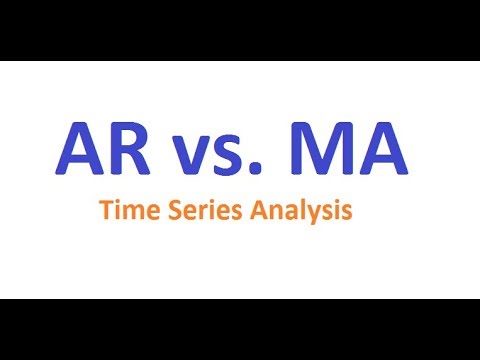Contents
When an investor purchases such shares, they become shareholders of the company. Shareholders contribute to the company’s share capital, and in return, they get to own a stake in the company equivalent to their shareholding. The share capital becomes a permanent source of funding for the company, and is paid back to the equity shareholders only at the time of the company’s liquidation. Why do business companies not pursue profit instead of increasing share prices? Profit maximisation doesn’t consider the notions of reward and risk as shareholders’ maximisation would. Profit maximisation is, at best, an interim objective of financial management.
- Evidently, the book value of any organisation plays a vital role in the determination of its worth.
- P/B ratio shows the relationship between a company’s market capitalisation and its book value.
- Return on Equity, called Return on Net Worth, shows a company’s profitability by calculating how much shareholders earn for their investment in the firm.
- It is because, during liquidation, a company’s physical asset values are reduced, and there are other extraordinary circumstances that are taken into account.
You may look for companies with steady and rising ROE over the past five to seven years to identify multibagger stocks. Companies or industries that extensively rely on their human capital will have an inappropriate reflection of their worth in their financial statements. Therefore, book value is not an apposite measure in these cases. However, investors should note that finding BVPS in isolation cannot produce promising analysis.
One may also name this stockholders’ equity or shareholders’ equity. For example, investors might own shares of stock in a publicly-traded company. Thus, the effect of recording a treasury stock transaction is to reduce the entire amount of fairness recorded in a company’s balance sheet. All the data wanted to compute a company’s shareholder fairness is out there on its stability sheet. Long-term assets are assets that can’t be transformed to cash or consumed inside a yr (e.g. investments; property, plant, and gear; and intangibles, such as patents).
Example of Wealth Maximisation
Calculate the present value of the interest tax shield discounting at the cost of debt. A market is favourable only if the equity spread and economic profit earned by the average competitor is positive. If the average competitor’s equity spread and economic profit are negative, the market is unappealing. To refer to the market capitalization of a company.

D) All assets financed with 50 percent equity, 50 percent long-term debt mixture. A) the number and types of products or services provided by the firm. B) the minimization of the amount of taxes paid by the firm. Companies may raise capital through debt which increases the ROE.
Determinants of Shareholder Value Creation
Should the shareholders’ equity continue to remain negative for consecutive years, the company faces a danger of liquidation. Here, the outstanding share capital of the company is added to the retained earnings, and is deducted for any share buybacks to arrive at the shareholders’ equity. In the case of a business, the primary objective of wealth maximisation is to maximise the value of the business, which then increases the value of stockholders. To increase shareholder wealth, a company must maximise the unit price. Assuming that the sales remain constant, increasing the product’s price will generate a higher profit.
Discount the unlevered cash flows and terminal value by the unlevered cost of capital. There are numerous challenges in the actual calculation of all of the economic value measures. These challenges rise because the actual calculations may require that exact estimates of the cost of capital be derived and several adjustments to the financial statements be made. Calculate the total shareholder value, which is equal to Present value of operating cash flows plus Present value of Residual value minus Market value of Debt.
Fundamentally a verbal model, it is unnecessarily burdensome. Therefore it requires a fairly involved computer programme. To do so, profits of future years must be discounted because money value a rupee of profit in a future year is worth less than a rupee of profit in the present. Wealth maximisation requires the management team to continuously seek the highest possible return while minimising risk and focusing on strategic direction. There are some disadvantages of this strategy, which we will discuss below.
The measures available to management and shareholders to appraise a firm’s value-creation performance can be categorized into three groups. Shareholder value creation infers continued creation of shareholder wealth through annual dividend receipts and share price appreciations. Wealth creation is defined as the changes in the wealth of shareholders on a periodic basis. Applicable to exchange-listed firms, changes in shareholder wealth are inferred mostly from changes in stock prices, dividends paid, and equity raised during the period. There are many examples of wealth maximisation.
The material and information contained herein is for general information purposes only. Consult a professional before relying on the information to make any legal, financial or business decisions. Use this information strictly at your own risk. Khatabook will not be liable for any false, inaccurate or incomplete information present on the website. Profit maximisation does not take into account the cash value.
Equity is necessary as a result of it represents the worth of an investor’s stake in securities or a company. Investors who maintain inventory in an organization are usually excited about their personal equity in the firm, represented by their shares. Yet this kind of personal equity is a function of the corporate’s total fairness. Owning inventory in a company over time might yield capital gains or inventory worth appreciation as well as dividends for shareholders. This sort of equity provides its shareholders the best to sure company property. Since the asset amounts report the cost of the property on the time of the transaction—or much less—they do not replicate present honest market values.
Upon calculating the entire property and liabilities, shareholder equity may be determined. Market value of fairness is identical as market capitalization and both are calculated by multiplying the total shares excellent by the current worth per share. To determine complete assets you need to add long run belongings and current belongings. Current property are the receivables and money of the corporate and long run assets is the worth of the capital property and property. On an organization’s steadiness sheet, the quantity of the funds contributed by the owners or shareholders plus the retained earnings .
Difference Between Purchasing and Procurement Explained
It offers rational guidelines aiding in the effective usage of the resources available. The basic requirement for a firm’s marketable securities. A) Safety b) Yield c) Marketability d) All of the above. Which of the following would be included in a cash estimation/ budget?

This measure of an organization’s worth is calculated by multiplying the current inventory worth by the entire number of excellent shares. A company’s market value of equity is subsequently all the time changing as these two enter variables change. It is used to measure a company’s size and helps buyers diversify their investments throughout firms of different sizes and totally different ranges of threat.
The operator itself has been trying to raise Rs20,000 crore via a mix of equity and debt for several months, but hasn’t managed to close it. The company has blamed the delay in the equity conversion as the reason for it being unable to close its fund raising. The market cap of the company is the market value of the company.
How do you calculate shareholders equity?
The idea of equity is important for more than just judging a company. In a broader sense, equity is a way to figure out how much you own of any asset after you take away all the debts that go with it. On the balance sheet, each type of liability https://1investing.in/ should be listed separately. Shareholder equity alone is not a good way to tell how healthy a company’s finances are. Still, when combined with other tools and measures, an investor can get a good idea of how healthy the company is.
Market value is the worth of a company based on the perceived worth by the market. Thence, if this company were to be liquidated on 31st March 2020, all its shareholders would be entitled to receive a portion of Rs. 160,000, according to their stake in that organisation. It refers to the stocks that have been sold to stockholders but have not been repurchased by the company. It includes stocks that have been issued to company officers, public investors, company insiders and the likes.
For instance, a business has whole assets price £1000,000 and complete liabilites price £four hundred,000. The business has share capital value £350,000, retained earnings of £250,000, however no treasury shares. Think of retained earnings as financial savings since it represents a cumulative complete of earnings that have a stockholders current wealth in the firm is calculated by been saved and put apart or retained for future use. Once the merger is complete, a consolidated stability sheet will present a rise in stockholders’ fairness. An necessary monetary ratio used by investors is return on fairness. ROE shows buyers how effectively the company is producing a return for its shareholders.
Profit maximisation does not consider the risk of uncertainty and risk, contrary to wealth maximisation, which considers both. Therefore, a company needs to communicate their brand purpose clearly and effectively. Furthermore, a company cannot simply ignore the impact of intangible assets by focusing on maximising profits. In such cases, customers may feel that the company has harmed them.